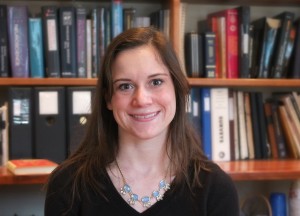A clinical case study from our 2014 annual report
Eight months ago, a family came to our clinic as a referral from a trusted friend and provider at a nearby children’s hospital. Just as we have done for countless families for more than 25 years, the Clinic for Special Children sought to answer a deceptively simple question: “What is wrong with our child?”
The family lives just 50 minutes east by car but is a cultural ocean away from our typical Old Order Amish and Mennonite clientele. Arriving with a healthy dose of skepticism from the suburbs of Philadelphia, the family entered our post and beam, barn-like facility to find simple furniture, an Amish family waiting patiently, and an unnerving quietness. Is this really the state-of-the-art pediatric genetic facility that came so highly recommended?
The family had already taken their child to see experts at all of the world-class centers in the surrounding area, but they were left without a diagnosis or a window of hope for treatment. Quality health insurance, financial means, and an expansive network of friends were also of little help when it came to their child’s undiagnosed problem. It was clear the child was delayed, but special tutors and diagnostic testing did not solve the problem. After everything they had tried, this cornfield clinic in Strasburg, PA was worth a shot.
In the case of the new family, there was no smoking gun. A 2-3 hour initial office visit did not provide any immediate answers. During the weekly patient review meeting where clinicians and scientists review cases together, the team agreed that the best hope for the child was exome sequencing, determining the genetic code for approximately 1% of the genome that encodes proteins. It was an educated guess, 25 years in the making, and had no guarantee of success.
Last week, the family came back for a meeting with the clinic’s medical director and genetic counselor. The results were carefully explained, and it was made clear to all involved that their long journey to a cornfield clinic was really a new direction, not a conclusion. A promising genetic variant was found but the significance of the variant is currently unknown. Their child will be part of a study with a handful of other children identified throughout the country. There are no treatments available, and there is no specialist waiting to greet them back at the modern research hospital. But a genetic diagnosis is a lifeline – the first important answer to the question, “What is wrong with my child?”
The family’s story is far from over. Who will help them to navigate their child’s care? Who will follow through on routine care after the research has concluded and the papers are published? This is where the rubber meets the road for so many families in search of help, and it is where the Clinic for Special Children has thrived against all odds. This child is no different than the 17 Amish children diagnosed with GA1 25 years ago. Rather, this child only confirms the need for more primary care centers focused on personalized medicine.
“If you want to practice personalized, genomic medicine, you have to make it personal,” says Medical Director, Kevin A. Strauss, MD. “The clinic strives to integrate powerful technological advances into the care of the most vulnerable among us. It is my hope that the Clinic for Special Children will help others find the humility to ask tough questions of our medical system, so that more communities have access to the best care. The technologies exist – we just have to learn how to close the implementation gap.”
 al intensive care unit. Last summer, She was an intern at the Hershey Medical Center within the biochemistry department. Kendra is now finishing her coursework at F&M, including CSC’s “Plain People and Modern Medicine” capstone biology seminar.
al intensive care unit. Last summer, She was an intern at the Hershey Medical Center within the biochemistry department. Kendra is now finishing her coursework at F&M, including CSC’s “Plain People and Modern Medicine” capstone biology seminar.